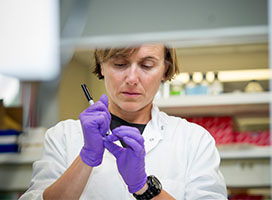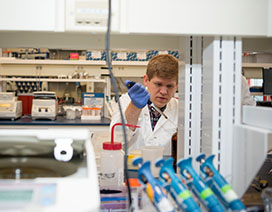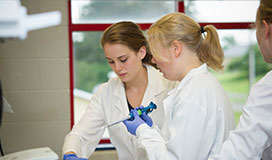The use of comparative physiology in mammary stem cell research
The mammary gland is an evolutionary conserved, milk-producing gland that is a defining characteristic of all female mammals. The development of this tissue follows the same sequence of events for all mammals and consists of the mammary stroma being established prior to birth and the mammary epithelium primarily developing postnatal. Moreover, the mammary gland is a dynamic organ that undergoes significant changes during pregnancy, lactation, and involution. It is generally accepted that the cellular repertoire of the human mammary gland is generated by stem cells. These cells, commonly referred to as mammary stem/progenitor cells (MaSCs), have a unique capacity for self-renewal, allowing them to persist for a lifetime. Due to these unique features, however, stem cells represent a primary target cell for the origin and development of cancer, including mammary cancer.
Our laboratory studies the regulation of important stem cell properties such as self-renewal, differentiation and proliferation in MaSC isolated from a variety of mammalian species. By comparing the in vitro characteristics of MaSC from different species, we identified a novel form of intercellular communication that plays an important role in self-renewal. More specifically, we found that canonical Wnt factors present in microvesicles (which are a type of extracellular vesicles secreted by cells) are important for long-term expansion capacity of MaSC in vitro. Signaling by the Wnt family is important for development and homeostasis, and has also been implied in stem cell control, as a proliferative and self-renewal signal.
Interestingly, and despite the close relation in development and function of the mammary gland, there are striking differences in the incidence rate of mammary cancer among mammalian species. We are currently using our comparative multi-species approach to identify molecular mechanisms that can explain susceptibility or resistance towards mammary cancer development by exposing MaSC from species with varying susceptibility for mammary cancer to pro-tumorigenic stimuli. Understanding the molecular mechanisms underlying differences in MaSC phenotypes between species will aid in the identification of biomarkers for predicting susceptibility/resistance to mammary cancer and the design of new therapeutic strategies for the treatment of mammary cancer.





